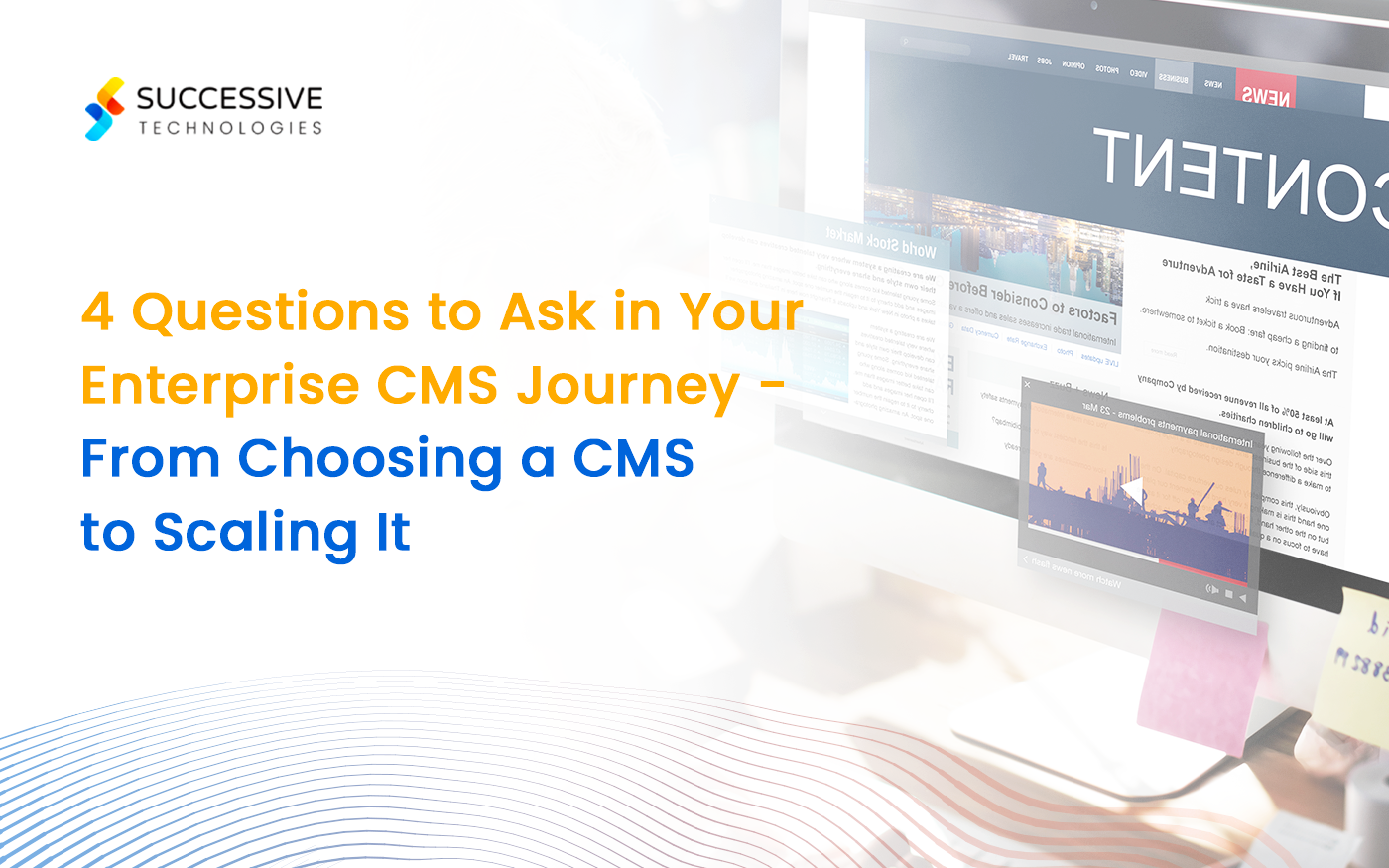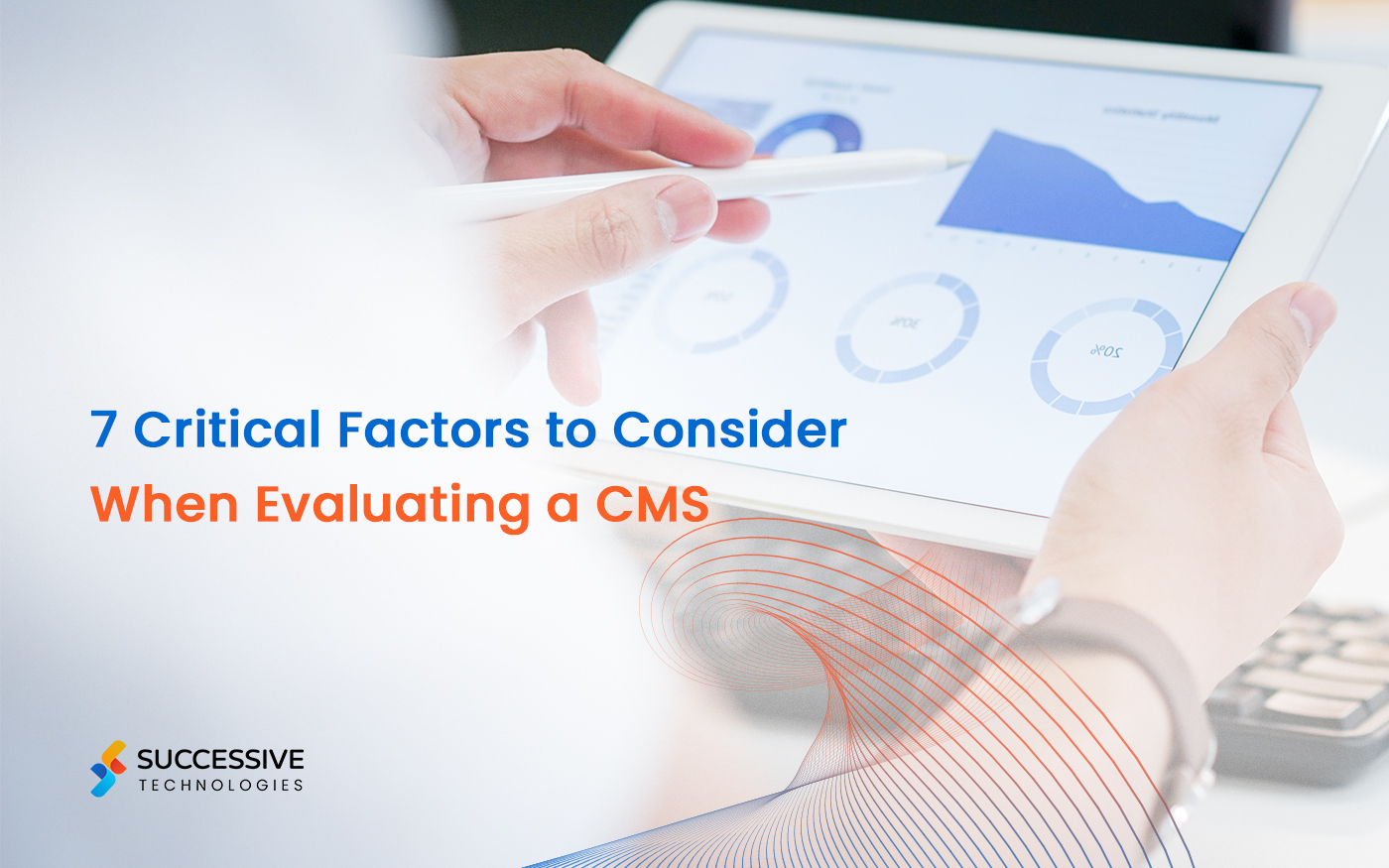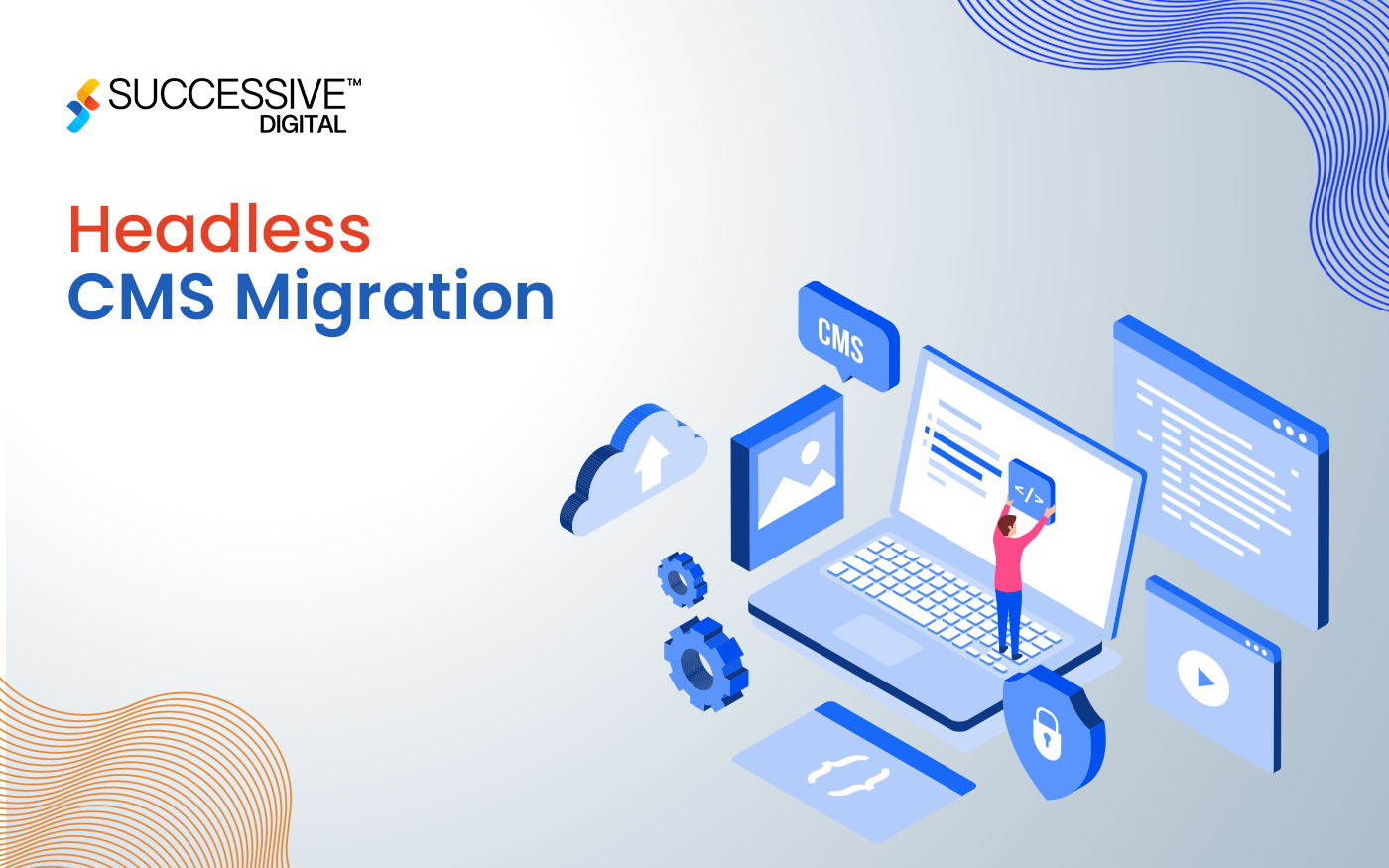CMSs allow content authors and editors to manage their content without needing to involve developers. They offer ease of use, a shorter time to market, as well as a number of extensions and add-ons that can help you customize your website’s functionality to suit your needs. However, when it comes to getting the most value out of this, an immaculate CMS design is the key.
But designing a website built on a CMS requires a good deal of planning. You need to understand the strengths and weaknesses of your CMS of choice in order to build a website that works for you.
Following a few best CMS design practices can help ensure that the content structure and experience are well suited to your business’s unique content and requirements.
8 tips to design a CMS-friendly website
Content is the most important element of your website. Keeping this in mind, these are some key design considerations for CMS development.
1. Research the features of your CMS Design
What features does your CMS offer? Are there any limitations you have to consider? Your website design should be one that can be easily created within your CMS. If your CMS design philosophy doesn’t allow you to easily add certain design elements without a lot of custom coding, you may need to rethink your design.
Learning about the features your CMS offers out of the box can help you streamline your website development efforts.
Also consider what plugins and modules already exist for your CMS and how you can use them in your website and design.
2. Design the pre-existing elements
Your CMS may already offer some pre-existing features such as forms, buttons, and more, out of the box. While these will come with some default styling, in order to use them on your website, you’ll have to create brand-specific styling for them. This would make them easy to integrate with the rest of your website CMS design.
Read 7 Critical Factors to Consider When Evaluating a CMS
3. Create reusable components
A great way to get the most value from your CMS design strategy is to use modular design. Reusable components and patterns help maintain a cohesive look across your website while also giving content editors the flexibility they need to create different layouts.
Reusable blocks in the WordPress editor (Source: WPBeginner)
Instead of creating whole pages at a time, create reusable sections. These can be made up of blocks or components that can be used independently or combined to create larger elements within your broader CMS design. For instance, basic components such as headings, images, buttons, and forms can be combined to create larger elements such as a CTA block or a slider.
Do consider different scenarios where these elements can be reused and recombined and create suitable designs for each of these. Use actual content to understand how it can fit within a larger theme. A large sample of content can help suggest how different types of articles, pages and formats would break down into corresponding page elements.
Read Headless vs. Traditional vs. Hybrid CMS: A Comparison
4. Create responsive and flexible designs
Do think about scenarios where content may be displayed in a different form than expected. For example, with structured content like telephone numbers and addresses, you will need to plan for the eventuality that some content may be missing (such as a street name in the address), or in a different format (such as a country code with or without the plus sign).
You will also need to consider what happens when content is significantly longer or shorter than expected. Headings may spill over from one to two or three lines, and body content may run into multiple paragraphs, making some page elements display very differently in your design. Do add instructions for what to do in this scenario, e.g. extending the background in case of additional content, or resizing the text to fit within a box.
Also consider which parts of each block need to be made editable, e.g. a change in the background image might necessitate changing the colors of text and buttons as well. Careful planning for each scenario can help minimize overwhelm for content editors while making sure your content is displayed in the best possible way.
Content editors may also decide to use content in unexpected ways, such as by adding a heading inside a bullet list. The design needs to be flexible enough to accommodate such uses as well.
Finally, your design must also be responsive, so that content is displayed correctly on screens of different sizes.
5. Create templates
Consistent design templates make it easy to onboard new content authors and editors.
Create templates for each type of page used on your website. Follow a logical visual hierarchy, keeping heading and image sizes consistent across pages. A few standard types of pages you can create templates for include the home page, contact page, blog listing page, and blog detail page.
Creating content templates in Umbraco (Source: Our Umbraco)
Do consider if any templates can be reused for other pages — minimize the number of unique designs to prevent confusion among content editors. Also plan for any content that is to be added in the future. For instance, your website may not have any published case studies, but if you plan to add these in the future, you should design the template for them.
While content editors might need some options to edit templates, try to find the right balance between giving them the control they need and minimizing the chance for errors by providing limited options.
For instance, editors will need the ability to apply style treatments to text, such as bold and italicized text, numbered and bulleted lists, blockquotes, captions, and hyperlinks. But it’s best to avoid giving editors the option to apply too many individual style treatments to page elements in order to maintain the consistency of the overall design.
6. Create accessible designs
Accessibility isn’t just a good-to-have. In some countries, it’s now mandated by law. Your website design should meet WCAG guidelines. These include the following.
Read 11 Ways You Can Improve Web Design Accessibility
7. Design for non-technical users
Consider your website design from a non-technical user’s perspective. Will they be able to manage content, media and design elements independently in case something needs to be changed or manually applied? If not, you may have to rethink your design.
It can help to create standards and processes for image selection and styling of text for the use of editors, authors, and administrators. But on the whole, ensure that you design the website or application so that even if users make mistakes, the presentation isn’t significantly affected.
8. Test with real content
Finally, test your application with real content. Make sure that the website behaves as intended even in scenarios where there’s much longer or shorter content. Also try adding random pieces of content from other sources to suggest scenarios you may not have considered before.
Also, if there is existing content in a legacy website or application, the design should also be able to accommodate it.
Maximize ROI with the immaculate CMS design
CMS platforms offer a number of powerful features within an easy-to-use user interface. With thorough planning, you can design your website to take advantage of all the flexibility and modularity that your CMS offers.
A good design will ensure that content authors and editors are able to easily perform their tasks without any confusion and errors, enabling you to streamline operations and maximize the return on investment from your website.












